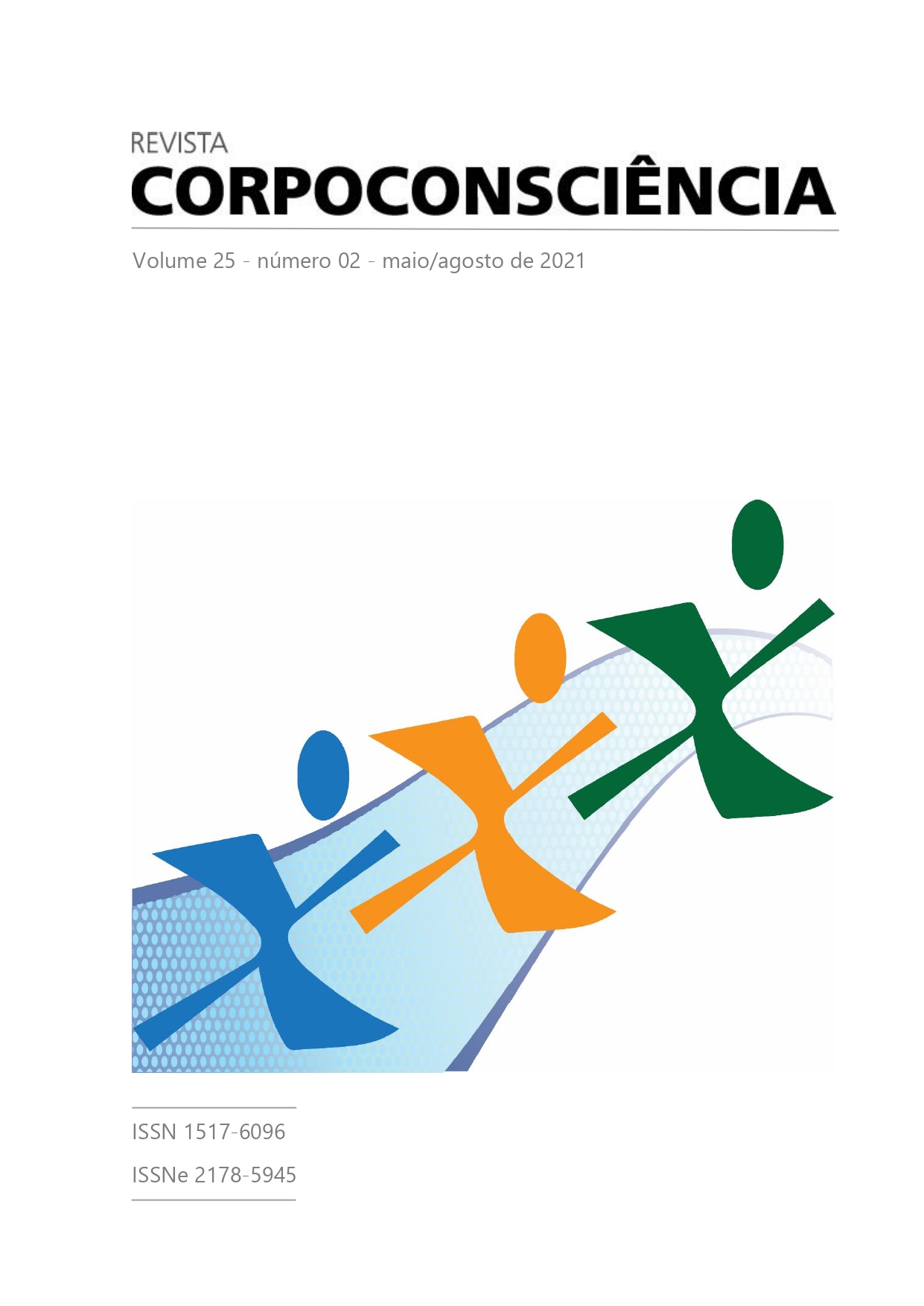CARACTERIZAÇÃO DE ELÉCTRODOS TÊXTEIS PARA MEDIÇÕES EMG
IMPEDÂNCIA E MORFOLOGIA DO SINAL
DOI:
https://doi.org/10.51283/rc.v25i2.12697Palavras-chave:
Sistemas Vestiveis, Eléctrodos Têxteis, Electromiografia, Vestuário SensorialResumo
Eléctrodos têxteis são uma alternativa aos convencionais eléctrodos de cloreto de prata em sistemas vestiveis. A sua fácil integração em vestuário e o conforto que providenciam tornam-nos um interessante desenvolvimento da engenharia têxtil. O potencial destes eléctrodos para permitir a discreta recolha de dados em contexto de saúde e desporto poderá permitir o desenvolvimento de vestuário biossensivel com aplicação em biomecânica. No entanto, uma adequada validação dos sinais registados é fundamental, e poucos estudos apresentaram metodologias consistentes para registos electromiográficos baseados em elétrodos têxteis. Este estudo apresenta a validação das propriedades eléctricas e morfológicas de sinais electromiográficos registados com eléctrodos têxteis, em comparação com os convencionais eléctrodos de cloreto de prata. Os resultados indicam que ambos os eléctrodos apresentam razões sinal-ruído identicos, mas com uma resposta em frequência de impedância distincta. A morfologia do envelope electromiográfico é também identifca entre electrodos, ainda que geralmente de menor amplitude no eléctrodo têxtil.
Referências
BECK, Travis W. e colaboradores. The effects of electrode placement and innervation zone location on the electromyographic amplitude and mean power frequency versus isometric torque relationships for the vastus lateralis muscle. Journal of electromyography and kinesiology, v. 18, n. 2, p. 317-328, 2008.
BIFULCO, Paolo e colaboradores. A wearable device for recording of biopotentials and body movements. In: IEEE International Symposium on Medical Measurements and Applications, 2011. Digest of technical papers. Bari, Italy, p. 469-472, 2011.
CATRYSSE, Michael e colaboradores. Towards the integration of textile sensors in a wireless monitoring suit. Sensors and actuators A: physical, v. 114, n. 2, p. 302-311, 2004.
CHAN, Adrian; LEMAIRE, Edward. Flexible dry electrode for recording surface electromyogram. In: IEEE Instrumentation & Measurement Technology, 2010. Conference Proceedings. Austin, USA, p. 1234-1237, 2010.
CHO, Gilsoo; LEE, Seungsin; CHO, Jayoung. Review and reappraisal of smart clothing. International journal of human-computer interaction, v. 25, n. 6, p. 582-617, 2009.
COOSEMANS, Johan; HERMANS, Bart; PUERS, Robert. Integrating wireless ECG monitoring in textiles. In: International Conference on Solid-State Sensors, Actuators and Microsystems, 13th, 2005. Digest of technical papers. Seul, Korea, p. 5-9, 2005.
GRUETZMANN, Anna; HANSEN, Stefan; MÜLLER, Jörg. Novel dry electrodes for ECG monitoring. Physiological measurement, v. 28, n. 11, p. 1375-1390, 2007.
GUO, Li e colaboradores. Systematic review of textile-based electrodes for long-term and continuous surface electromyography recording. Textile research journal, v. 90, n. 2, p. 227-244, 2019.
HERMENS, Hermie J. e colaboradores. Development of recommendations for SEMG sensors and sensor placement procedures. Journal of electromyography and kinesiology, v. 10, n. 5, p. 361-374, 2000.
HILDENBRAND, Kasee; NOBLE, Larry. Abdominal muscle activity while performing trunk-flexion exercises using the ab roller, abslide, fitball, and conventionally performed trunk curls. Journal of athletic training, v. 39, n. 1, p. 37-43, 2004.
ISLAM, G. M. Nazmul; ALI, Mohammad Azan; COLLIE, Stewart. Textile sensors for wearable applications: a comprehensive review. Cellulose, v. 27, n. 11, p. 6103-6131, 2020.
KIM, Siyeon; LEE, Sojung; JEONG, Wonyoung. EMG measurement with textile-based electrodes in different electrode sizes and clothing pressures for smart clothing design optimization. Polymers, v. 12, n. 10, p. 2406, 2020.
LAFERRIERE, Pascal; LEMAIRE, Edward D.; CHAN, Adrian. D. C. Surface electromyographic signals using dry electrodes. IEEE Transactions on Instrumentation and Measurement, v. 60, n. 10, p. 3259-3268, 2011.
LI, Xiaoyan.; ARUIN, Alexander S. Muscle activity onset time detection using teager-kaiser energy operator. In: IEEE Engineering in Medicine and Biology Society. 2005. Conference Proceedings… p. 7549-7552, 2005.
LINZ, Torsten.; GOURMELON, Lena; LANGEREIS, Geert. Contactless EMG sensors embroidered onto textile. In: International Workshop on Wearable and Implantable Body Sensor Networks, 4th, 2007. IFMBE Proceedings… Springer, Berlin, Heidelberg, 2007.
MAROZAS, Vaidotas e colaboradores. A comparison of conductive textile-based and silver/silver chloride gel electrodes in exercise electrocardiogram recordings. Journal of electrocardiology, v. 44, n. 2, p. 189-194, 2011.
OLIVEIRA, Liliam F. e colaboradores. Effect of the shoulder position on the biceps brachii emg in different dumbbell curls. Journal of sports science & medicine, v. 8, n. 1, p. 24-29, 2009.
PANI, Danilo e colaboradores. Validation of polymer-based screen-printed textile electrodes for surface EMG detection. IEEE transactions on neural systems and rehabilitation engineering, v. 27, n. 7, p. 1370-1377, 2019.
RAINOLDI, Alberto e colaboradores. Geometrical factors in surface EMG of the vastus medialis and lateralis muscles. Journal of electromyography and kinesiology, v. 10, n. 5, p. 327-336, 2000.
SCILINGO, Enzo Pasquale e colaboradores. Performance evaluation of sensing fabrics for monitoring physiological and biomechanical variables. IEEE transactions on information technology in biomedicine, v. 9, n. 3, p. 345-352, 2005.
TAJ-ELDIN, Mohammed e colaboradored. A review of wearable solutions for physiological and emotional monitoring for use by people with autism spectrum disorder and their caregivers. Sensors, v. 18, n. 12, p. 4271, 2018.
XU, Pengjun.; ZHANG, Hui; TAO, Xiaoming. M. Textile-structured electrodes for electrocardiogram. Textile progress, v. 40, n. 4, p. 183-213, 2008.
Downloads
Publicado
Edição
Seção
Como Citar
Licença
Autores que publicam nesta revista concordam com os seguintes termos:
- Autores mantém os direitos autorais e concedem à revista o direito de primeira publicação, com o trabalho simultaneamente licenciado sob a Creative Commons Attribution License que permitindo o compartilhamento do trabalho com reconhecimento da autoria do trabalho e publicação inicial nesta revista.
-
A Revista Corpoconsciência da Universidade Federal de Mato Grosso está licenciada com uma Licença Creative Commons - Atribuição 4.0 Internacional. Baseado no trabalho disponível em https://periodicoscientificos.ufmt.br/ojs/index.php/corpoconsciencia/index.
- Autores têm autorização para assumir contratos adicionais separadamente, para distribuição não-exclusiva da versão do trabalho publicada nesta revista (ex.: publicar em repositório institucional ou como capítulo de livro), com reconhecimento de autoria e publicação inicial nesta revista.
- Autores têm permissão e são estimulados a publicar e distribuir seu trabalho online (ex.: em repositórios institucionais ou na sua página pessoal) a qualquer ponto antes ou durante o processo editorial, já que isso pode gerar alterações produtivas, bem como aumentar o impacto e a citação do trabalho publicado (Veja O Efeito do Acesso Livre).





